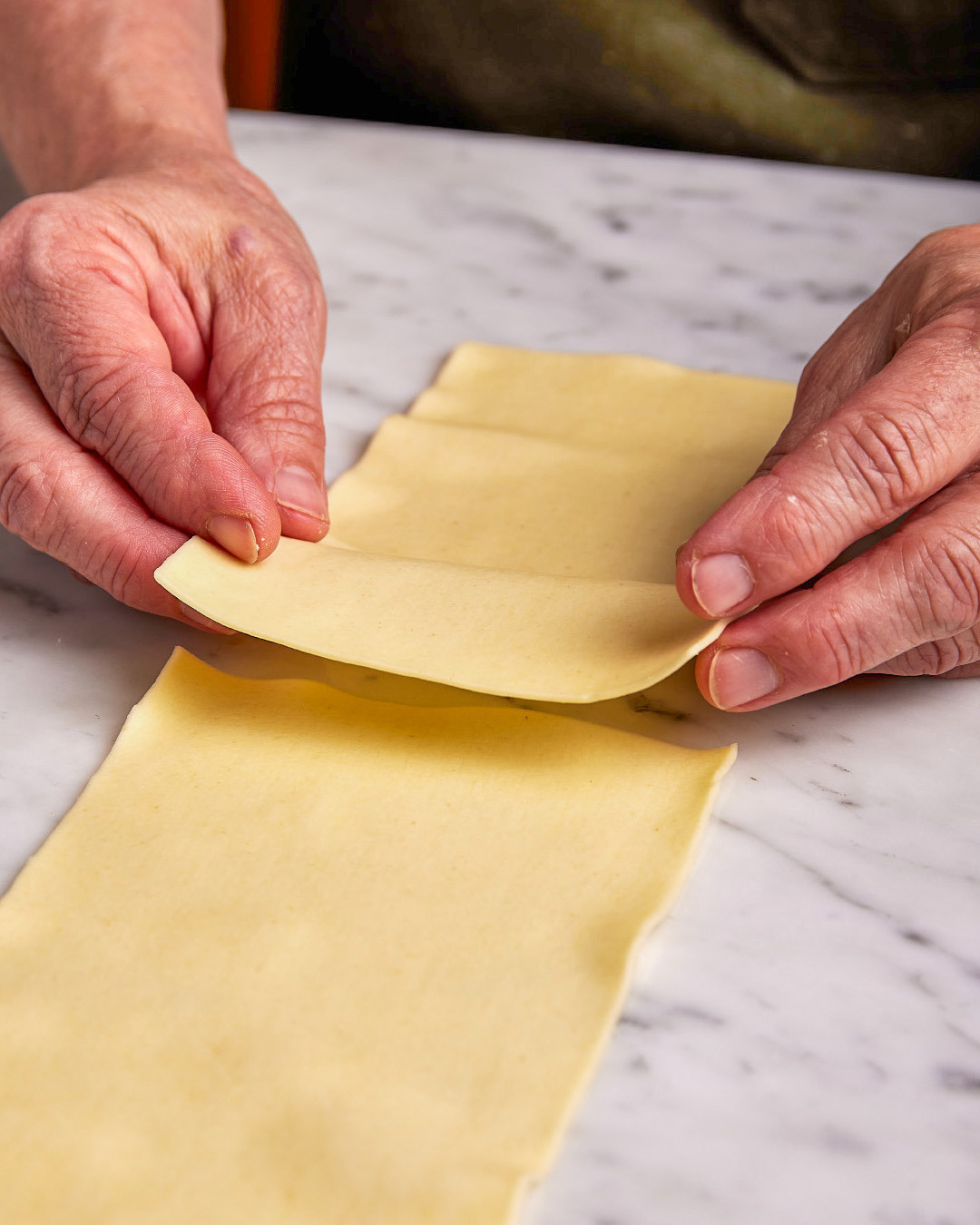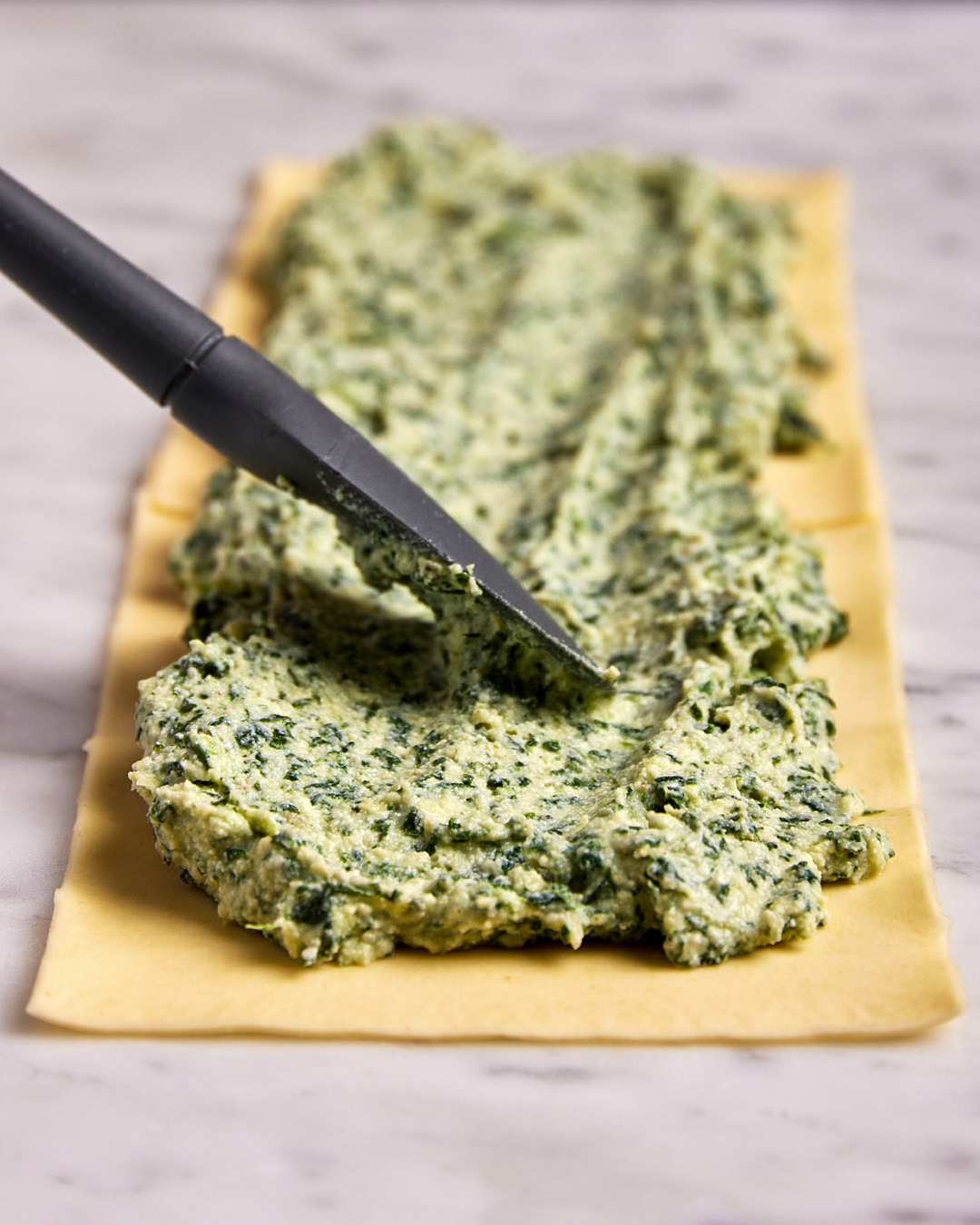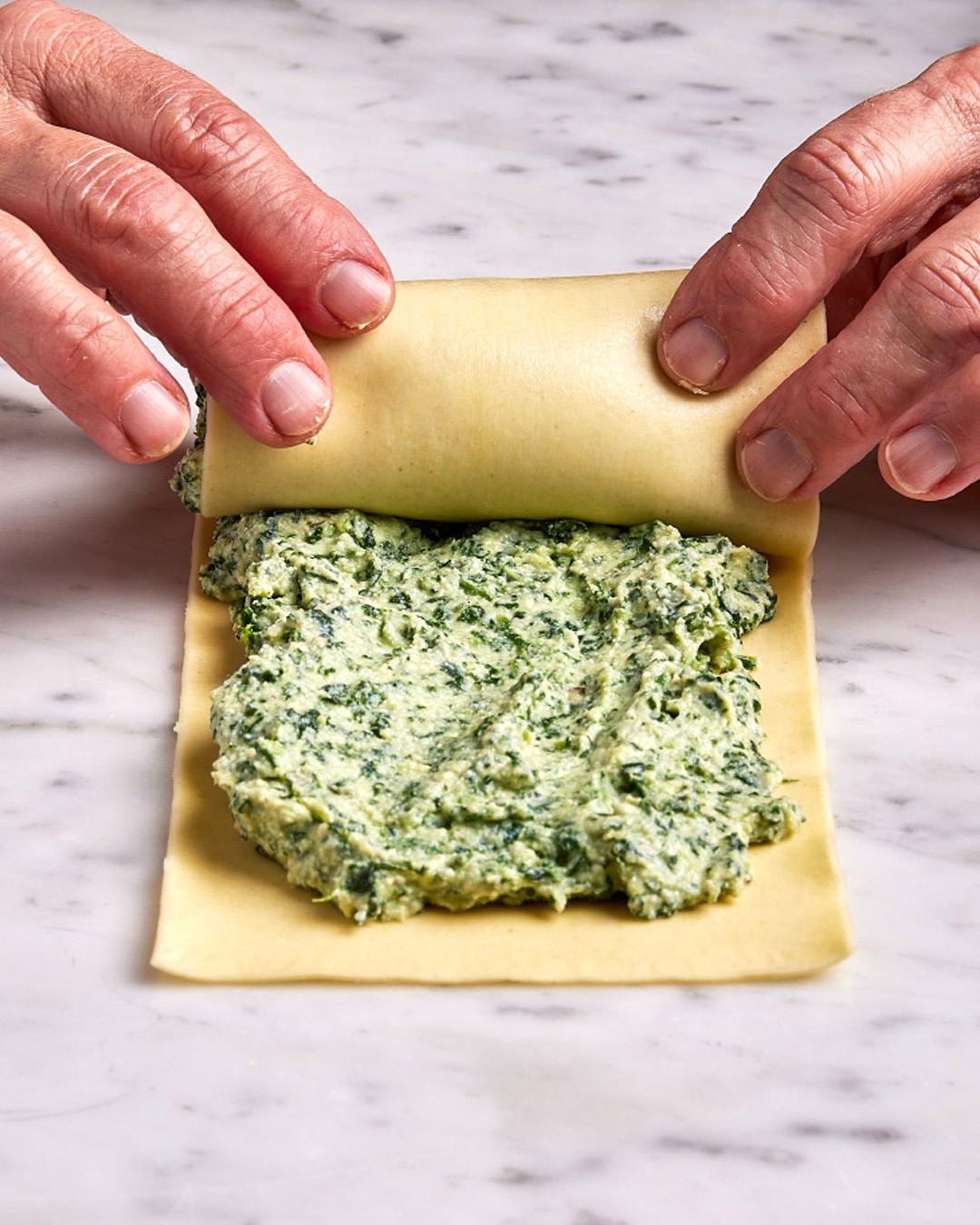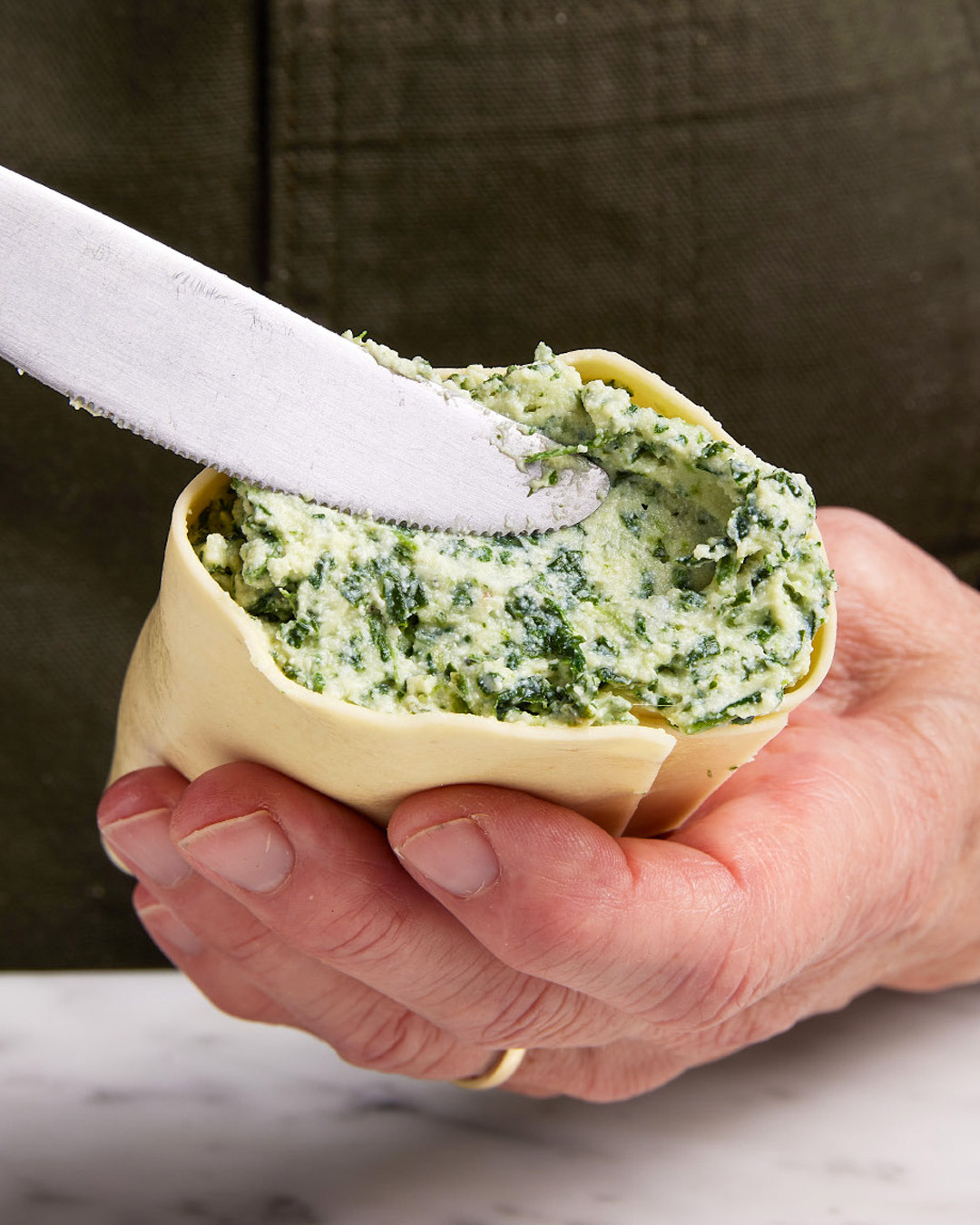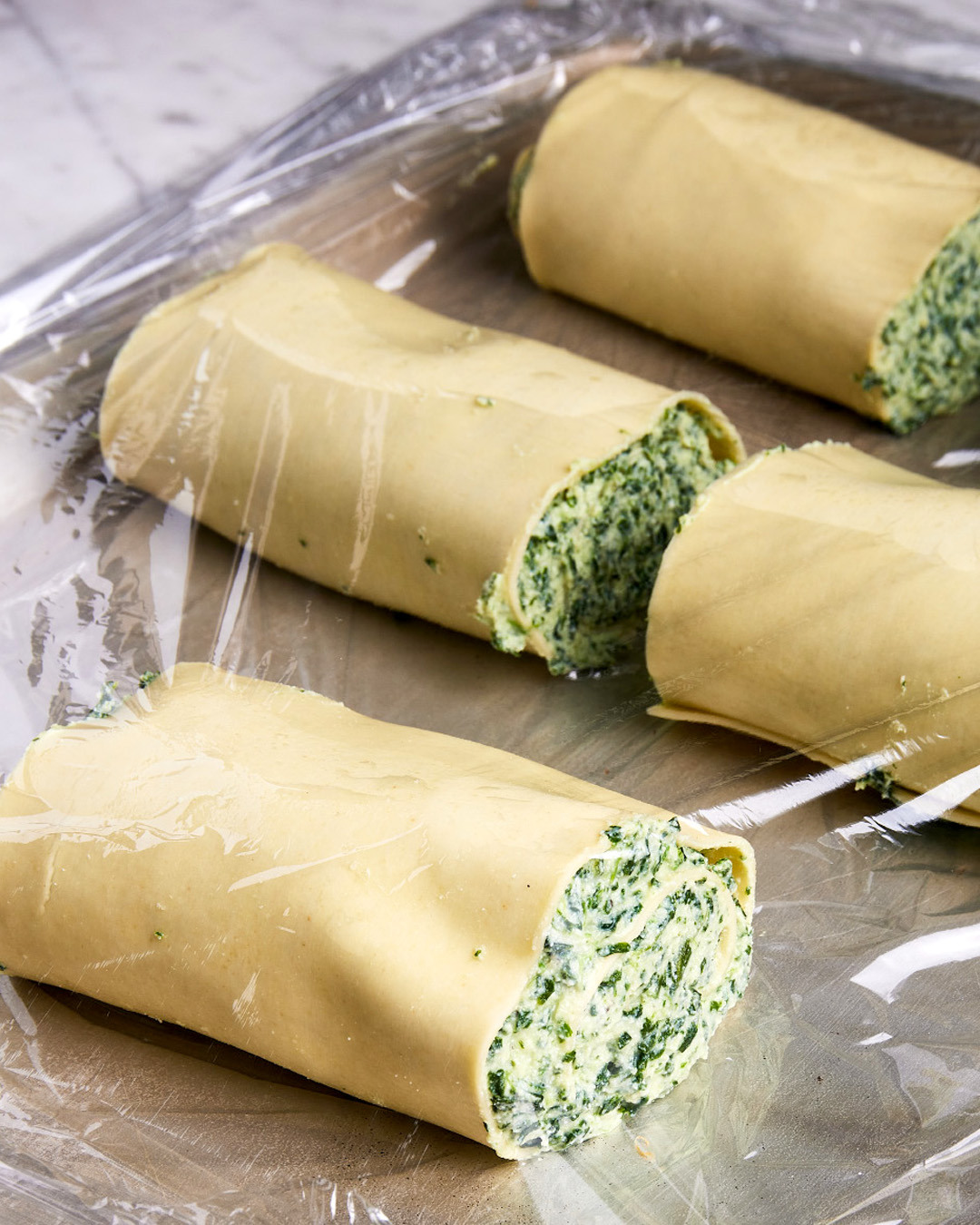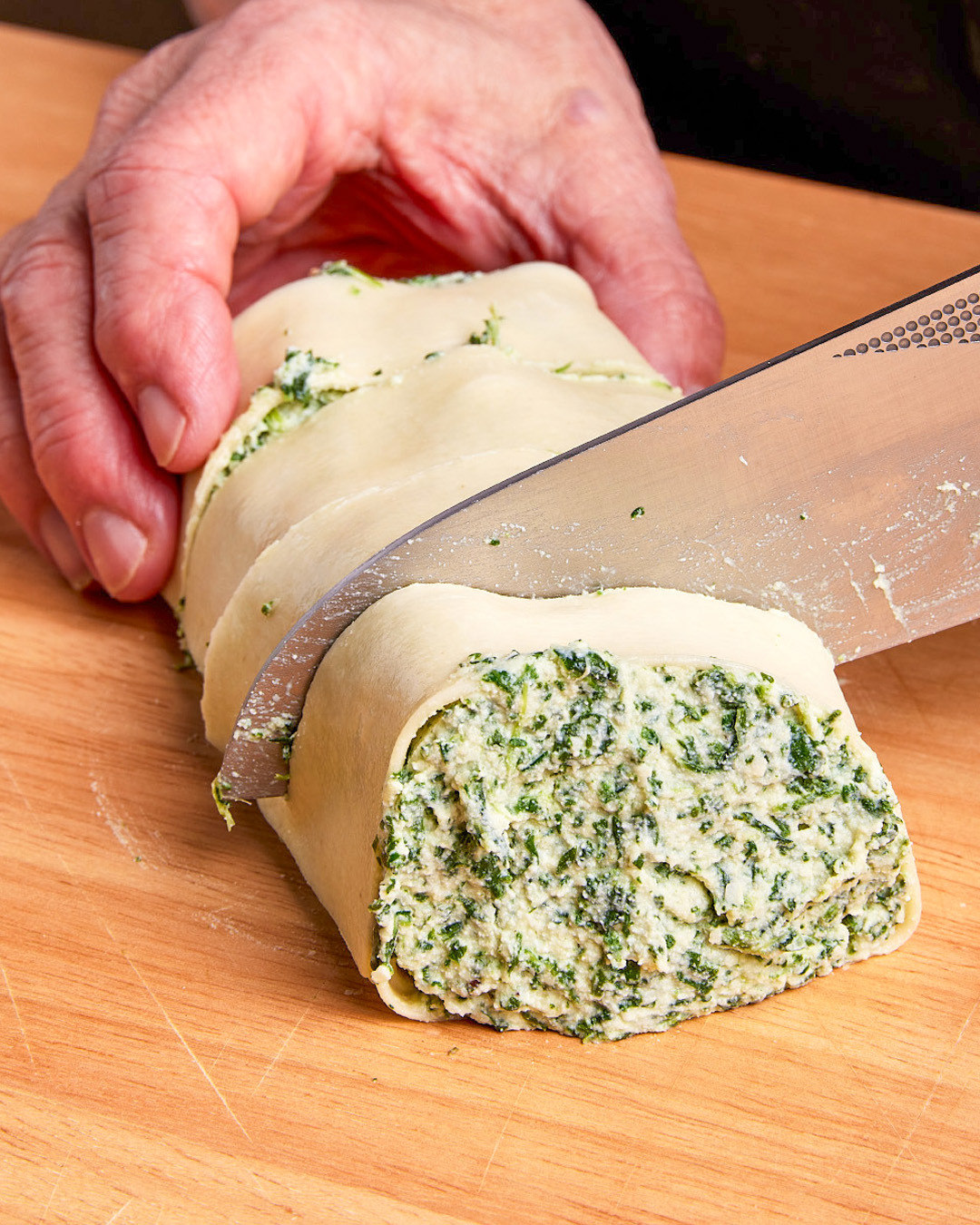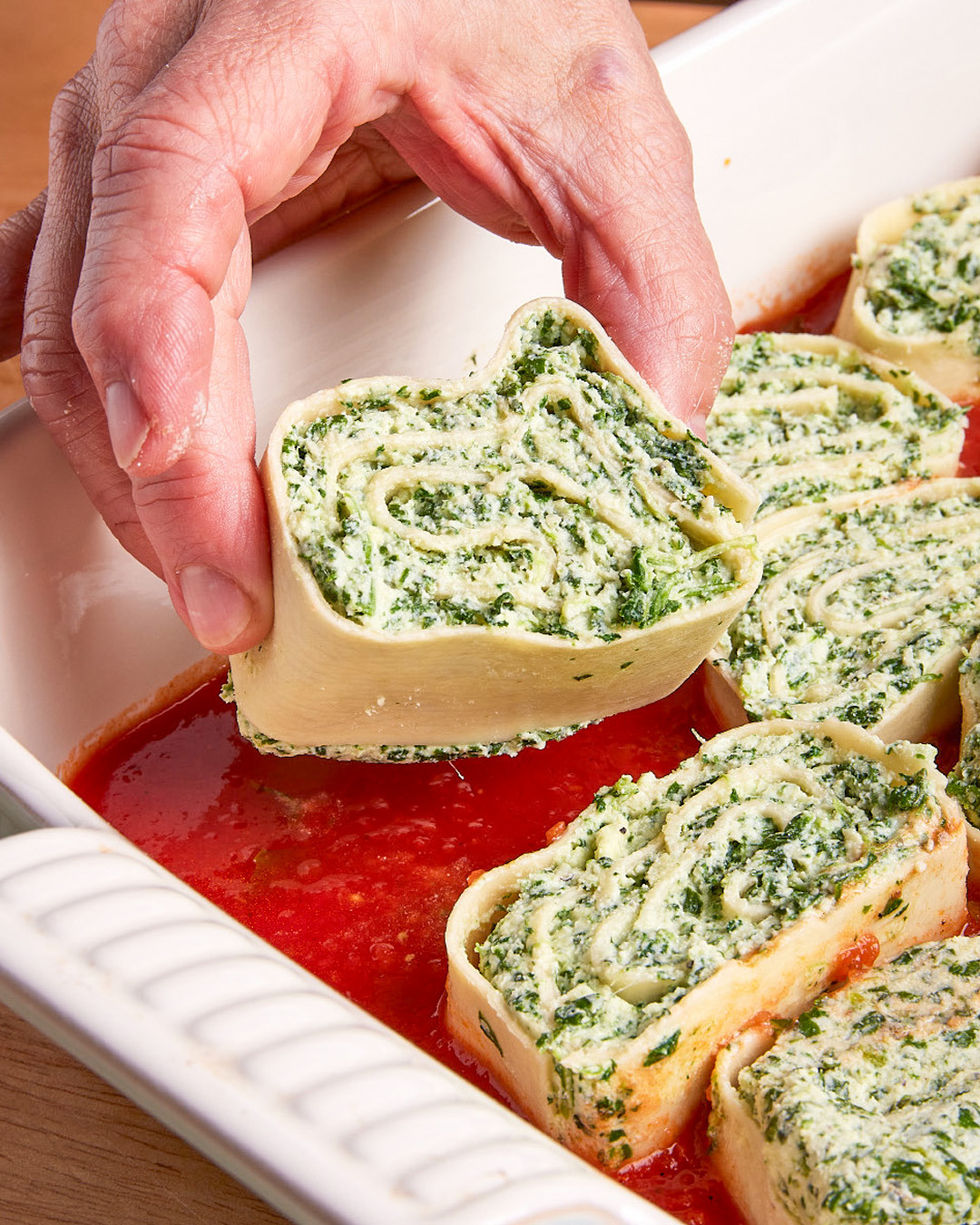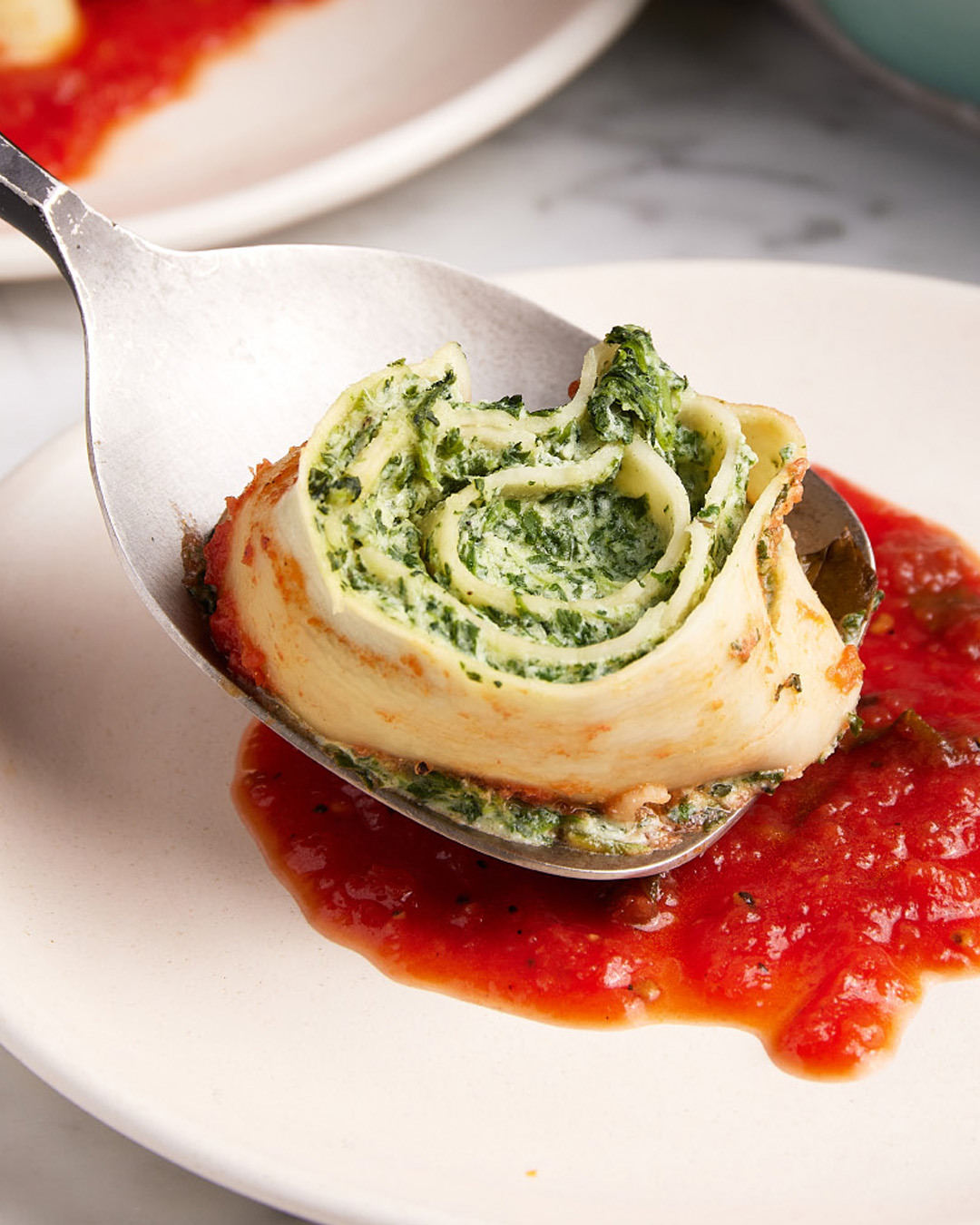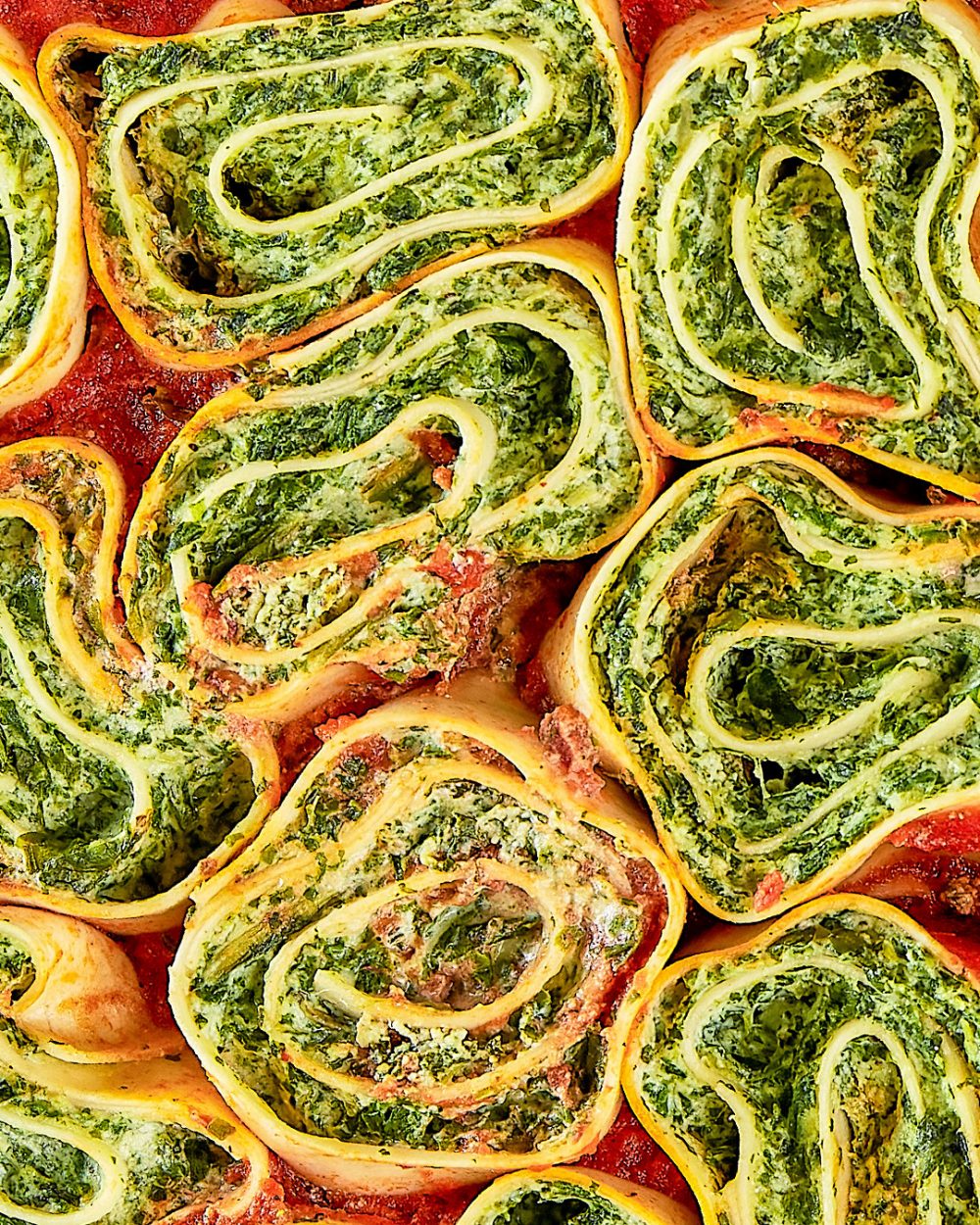It’s a sight that would stop any lasagna-lover in their tracks. From a tiny corner of Rome’s Trionfale Market—already splayed with an array of tempting food—beckons tray upon tray of smooth, spiraled discs made of pasta wrapped around a thick, creamy filling of ricotta and spinach. It’s as though a classic lasagna had been rolled into a cheesy log, then cut into slabs.
It was Annamaria Moretti—owner of the tiny Pasta all’Uovo shop—who quickly disabused us of that notion. We learned that they are rotolo di ricotta e spinaci, or rolled pasta with ricotta and spinach. Tomato-tomahto? Certainly not in Rome, for rotolo is a classic Italian recipe unto itself.
This was Milk Street’s first encounter with rotolo di ricotta e spinaci, but far from mine. Years ago, I met rotolo in Exile. That is, while working at Restaurant Exile, so named for its remote location in lower New York City, a rock’s throw from the Hudson River. It was the mid-1980s, no internet, no cell phones. To find the restaurant, you needed hand-written directions and a dose of steady nerves to brave the rundown stretch of abandoned buildings.
Once inside, the restaurant was confident in its identity, aiming high with white tablecloths and Italian-Mediterranean classics done creatively well. There, I served rotolo as waitress, not cook. But I soon found myself hounding the chef to allow me to work kitchen shifts (for free!) to learn how to make it. Astoundingly, he agreed, and my waitressing days were done. It turns out that rotolo, with its winding, spiraled beauty, lured me off one path and onto another. That of my future.
The traditional way of making rotolo begins with homemade pasta, rolled out by hand into a large, thin sheet. The filling is a mix of ricotta and spinach, with mozzarella and Parmesan adding creaminess and savory depth. Once the filling is spread over the pasta, the whole thing is rolled up tight and the ends are sealed.
The roll then is wrapped in cheesecloth or a kitchen towel and simmered in water until cooked. Once cool, the roll is sliced into rounds (revealing the spiral), then reheated in an oven or skillet and served with tomato sauce. And it tastes as good as it looks. The filling is light, creamy and rich. The pasta, sitting on its edge, is fork-tender with a delicate chew.
To compare notes, I called Exile’s then sous-chef, Shelley Boris, now chef and co-owner of Fresh Company Catering and Dolly’s Restaurant in Garrison, N.Y. Referring to Exile’s executive chef, “Bruce would make the rotolo every day and it was finicky. The pasta could end up too thick or too thin, or the center would cook unevenly. But other times it came out great.” She laughed, adding that the time spent on it far exceeded its profitability but that it was too popular to take off the menu.
In Rome, Moretti sells her rounds by the kilo for easy, take-home cooking. Just arrange them in a pan with some tomato sauce, pop them in the oven for a bit, and dinner is served, an Italian version of take-out. Here at Milk Street, we set out to create a home cook-friendly version.
We started with the pasta. We love homemade—and it’s not hard to make—but rolling out large sheets evenly enough for a dish like this? Not so easy. We tried using purchased fresh pasta sheets, but they can be difficult to find, and their size and thickness vary by brand. We next considered dried, no-boil lasagna noodles, but they seemed doomed because they’re far smaller than what’s needed for rolling up. And would their texture hold up?
It did! The texture comes out perfectly fork-tender. And because the noodles are parcooked, the rolls don’t need poaching—this was a game-changer. Their size turned out to be less of an issue than we expected. After a brief simmer in water to soften the noodles, we found their edges could be overlapped to form longer sheets that were easy to roll around our filling.
The spinach and cheese filling remains simple, with an important caveat. During early trials, the filling would sink down while the slices baked, ruining their appearance. After a bit of research, we realized this was due to excess moisture, particularly in the ricotta. Options available at most American supermarkets tend to be of lower quality compared to ricottas in Italy. Here, they tend to contain more water, which evaporates during cooking and contributes to the sinking problem.
The solution was easy. Place the ricotta in a mesh strainer and stir for a brief stint to rid it of excess water; this makes it denser and closer in texture to Italian-made ricottas. Also, because spinach tends to give off water as it cooks, we first wrap it in a kitchen towel and squeeze it dry. The result: no more sagging filling.
The result: a perfectly textured home-style rotolo. Just don’t call it rolled lasagna.
Pasta Rotolo with Spinach and Ricotta
